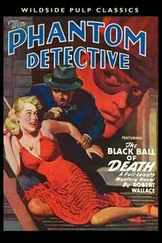He claimed that this figure had been confirmed by his study of the Charters of King Edward III.
Camden claimed to have seen the same inscription but, in his recollection, the figure was an almost equally startling forty thousand. There is no indication that these new cemeteries were intended to replace rather than supplement the existing churchyards, one and probably two other new ones were opened; it would seem therefore that Manny’s site could not possibly have taken more than half the victims of the plague, and probably a great deal less. If Stow’s figures were correct, this would mean, therefore, that a minimum of one hundred thousand people died of the Black Death in London, a figure credulously adopted by Rickman in his Abstract of Population Returns. {297} Even if Robert of Avesbury’s figure were accepted the total of the dead could hardly be less than forty thousand. Figures above fifty thousand have frequently been bandied about. Yet all these totals seem unreasonably high when set alongside a population of sixty or seventy thousand. The ecclesiastical registers, which might have provided a more accurate check, do not survive but such snippets of information as exist – as, for instance, that three out of seven benefices in the gift of the Abbey of Westminster fell vacant in the spring and summer of 1349 and both those in the gift of the Abbey of St Albans – suggest that casualties in London were more or less in line with those in other cities. Certainly there is no reason to think that it suffered less. A total of between twenty and thirty thousand dead, probably closer to the higher figure, is likely to be as accurate a guess as one will get unless some further source of satisfies is discovered.
Though, as everywhere, the poor suffered most, there were quite enough deaths among the rich and powerful to show that nobody was immune. John Stratford, Archbishop of Canterbury, died at his manor of Mayfield in August 1348. It is quite probable that he was not a victim of the plague but there is no doubt about his successor, the Chancellor, John Offord, who died in May 1349 at Westminster before he could even be enthroned. Clement VI then appointed the great scholar Thomas Bradwardine but, he, in his turn, died in the Bishop of Rochester’s London palace on 26 August 1349. A former Chancellor, Robert Bourchier, died of the plague in London and one of his successors, Robert Sadington, died in 1350, though of uncertain cause. The royal family seems to have kept out of trouble, the only casualty being the King’s daughter Joan who died at Bordeaux on her way to Portugal, but Roger de Heyton, the royal surgeon, died on 13 May 1349. {298} There were heavy losses among the dignitaries of the City. All eight wardens of the Company of Cutters were dead before the end of 1349. Similarly, the six wardens of the Hatters’ Company were all dead before 7 July 1350 and four wardens of the Goldsmiths’ Company died in 1349. {299}
The great Abbey of Westminster did not escape. Simon de Bircheston, its truculent Abbot, who had been prosecuted for assaulting a royal stonemason some twenty years before, took refuge in his country home at Hampstead. But in spite of his precaution he was an early victim {300} and twenty-seven monks accompanied him to the grave. A large black slab in the southern cloister of the Abbey probably commemorates their death and may even cover their remains. {301} By May, Simon Langham, who had been appointed a prior only a month before, was the only monk left deemed fit to administer the monastery.
The many deaths in the countryside and the natural reluctance of the carters to venture into the inferno of London meant that the usual supplies of food often failed to arrive. The Black Death prevented anything near a famine developing by rapidly and substantially reducing the demand but it was still often difficult for a citizen of London to know where to turn for his next loaf of bread. Piers Plowman noted:
It is nought long y-passed
There was a careful commune
When no cart com to towne
With bread fro’ Stratforde.
Many Londoners went out into the adjoining countryside in search of food and so spread the plague among those who had sacrificed a profitable market in the hope of escaping it.
* * *
London survived. Probably, indeed, it recovered as quickly as any city in England. In 1377 the population of the city itself seems only to have been about thirty-five thousand but this was after further attacks of plague and takes no account of population growth in the immediate vicinity. {302} The fact that all the chancery and exchequer work continued to be done in London was a powerful magnet and there was no city in which the villein, anxious to escape the attentions of a vengeful lord, could bury himself with greater confidence. Dr Creighton probably goes too far when he says that we may be sure ‘from all subsequent experience; that the gaps left by the plague were filled up by influx from the provinces and from abroad in the course of two or three years’, {303} but it is likely that, even in so short a period, much of the lost ground was made up.
And yet the mark left by the Black Death was not to be seen only in the new cemeteries. The sharp fall in moral standards which was noticed in so many parts of Europe in the years after the Black Death was nowhere more striking than in London. Such accusations of degeneracy recur throughout the ages – this time they may have had slightly greater justification than usual. Knighton reported that criminals flocked into the city {304} and John of Reading told of the great increase in crime, in particular crimes of sacrilege. {305} From this period, the city began to enjoy a doubtful reputation in the eyes of other Englishmen – a city of wealth but also wickedness; of opportunity, but opportunities to earn damnation as well as fortune. Walsingham denounced the Londoners roundly: ‘They were of all people the most proud, arrogant and greedy, disbelieving in God, disbelieving in ancient custom.’ Those who live in great cities are traditionally believed to be harder, more sophisticated and more rapacious than their country cousins but the Londoner certainly acquired his reputation the hard way and probably went a long way to deserving it. Any city which suffers as London suffered and rebounds rapidly to even greater prosperity can be excused a certain fall from grace during the years of its recovery.
10. SUSSEX, KENT AND EAST ANGLIA
SUSSEX and Kent were assailed from every side as the Black Death moved across from the West, spread south from London and made its independent entry at half a dozen Channel ports. In Sussex the absence of episcopal registers makes any generalization difficult. A few details, selected more or less at random, show that the county did not escape more lightly than its neighbours. Only five brethren survived out of a total strength of thirteen at the Priory of Michelham. {306} The Abbot of Battle had secured permission to fortify his Abbey only ten years before, but no moat or ramparts could save him from the plague which carried him off with more than half his monks. {307} At Appledram, almost in Hampshire, the number of customary reapers was reduced from two hundred and thirty-four to one hundred and sixty-eight, a drop of 28 per cent; at Warding, right at the other end of the county, twelve freemen and villeins died in March 1349, and a further sixty had perished by October, twenty-five leaving no direct heir. {308}
For the Black Death in Kent there has fortunately survived the account of William of Dene, a monk of Rochester, one of the few English chroniclers who handles the events of the day with anything like the impressionistic brio of his continental counterparts. {309}
‘In this year,’ he recorded,
Читать дальше












